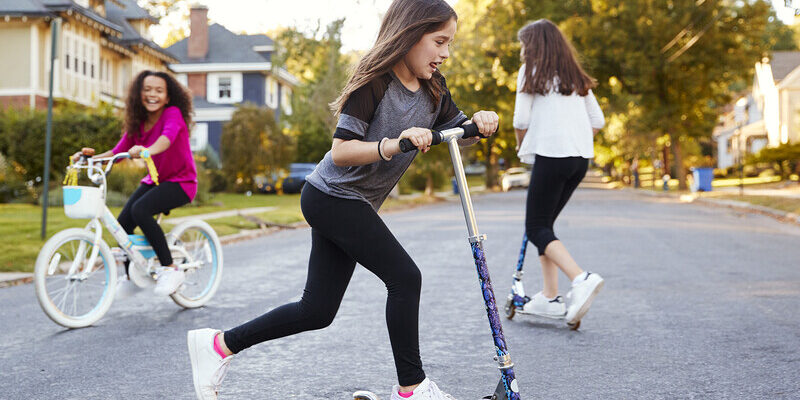By Daphne Baldwin Kornrich, MS, RDN, CDN, CSOWM
According to The Centers for Disease Control and Prevention obesity in children in the United States has tripled since the 1970s. Approximately 20 percent of children between ages of 6-19 are obese and less than 25 percent of children are getting the recommended 60 minutes per day of moderate exercise recommended by the American Medical Association (1,2).
With the emergence of new technology, the amount of physical activity that children engage in has decreased dramatically over the years. No longer are kids jumping rope, playing catch or hopscotch while waiting for the bus. They are now checking out their phones for messages, photos, and the latest TikTok videos. In addition, many schools have decreased gym classes, and some have eliminated recess where kids can engage in free activity and reboot, which helps with higher academic demands (2).
We know that exercise and activity is important to help prevent obesity and its associated health consequences, but what about the importance of exercise and activity on our children’s brain? Research has shown that exercise and activity help to improve the cognitive function of the brain and some studies have shown it helps increase reading and math scores as well as helping with attention spans in children. Exercise helps to increase the hippocampus and the basal ganglia, both structures of the brain which are involved with learning in children (2,3).
One study showed that children walking 20 minutes at a moderate pace on a treadmill were able to respond better to spelling, reading and math questions as compared to the students who remained sitting. Children who engaged in regular physical activity and at a higher fitness levels achieved better academic performance and had improved attention spans and memory (3). Long-term research has shown that an increase in physical activity and more time at school allotted for gym resulted in an improvement in academic performance. One study showed that having gym classes in the morning or early midday was more beneficial with regards to learning as compared to having gym at the end of the day (3).
The take home message is that physical activity and exercise for children are not only just about fun and games but crucial in the development of their brain which many influence their academic success. It is also important to acknowledge that one type of physical activity does not fit all. Children are no different than adults when it comes to physical activity. Some of us do not like competitive programs or too much structure, while others thrive on competition and structure. One child may love team sports while others may like more independent activities such as playing in the park, ice skating, hiking or bike riding and others love both. To promote lifelong physical activity, it is important to find an activity we enjoy (2,3,4).
Pencils, books, and computers may be necessities; however, they do not replace the importance of gym, recess, and overall play. Let us all, especially our children, go outside and have some fun!
References
1. https://www.cdc.gov/healthyyouth/obesity/facts.htm
2. https://publications.aap.org/pediatrics/article/131/1/183/30893/The-Crucial-Role-of-Recess-in-School
3. https://activelivingresearch.org/sites/activelivingresearch.org/files/ALR_Brief_ActiveEducation_Jan2015.pdf
4. http://parentingscience.com/exercise-for-children/
Daphne Baldwin Kornrich, MS, RDN, CDN, CSOWM has been a registered dietitian nutritionist for 30 years, working in a wide variety of clinical and outpatient settings. She currently specializes in bariatrics and weight management.

